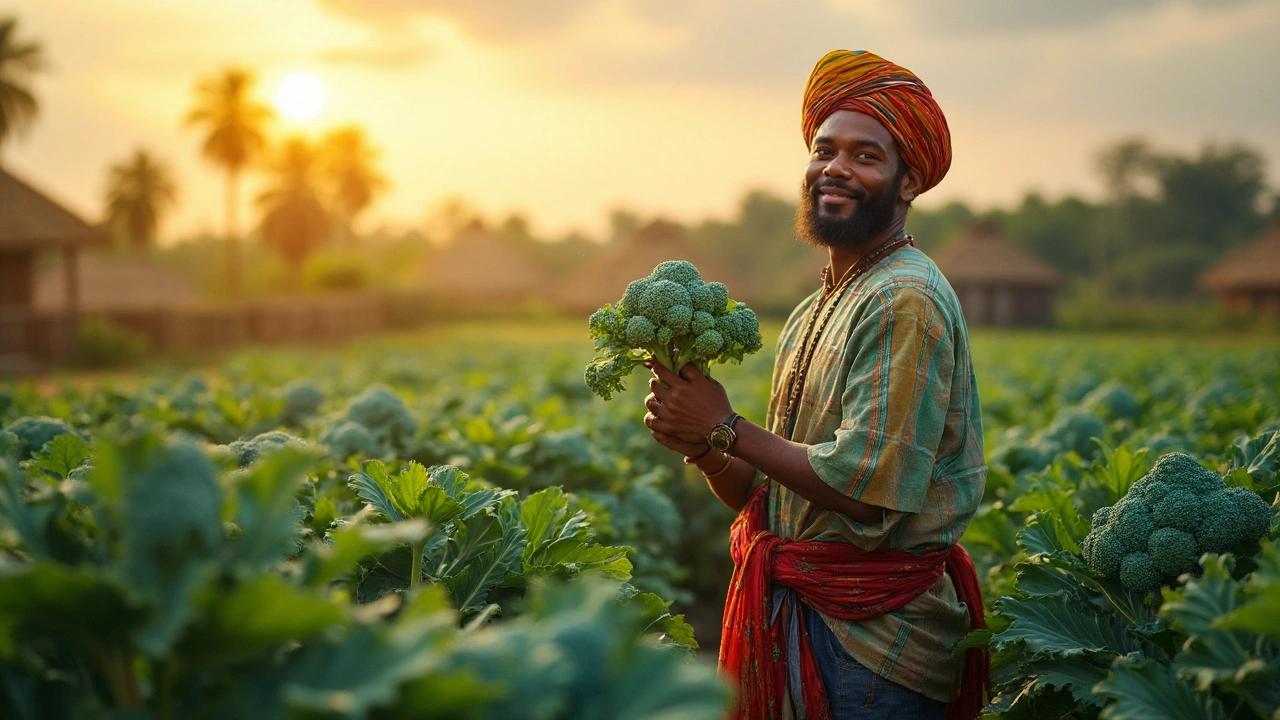Broccoli farming in India has seen growth, thanks to rising health awareness and changing food preferences. With the right techniques and market understanding, it can be a profitable venture. Learn about climate requirements, investment needs, and potential challenges. Discover tips for successful cultivation and insights into the Indian broccoli market dynamics.
Broccoli Farming in India: How to Grow It Right, Avoid Mistakes, and Get Healthy Harvests
When you think of broccoli, a nutrient-rich cruciferous vegetable that thrives in cool weather and is widely grown in India’s high-altitude regions. Also known as green cauliflower, it’s not just a superfood—it’s a smart crop for small farms and balcony gardens alike. Unlike tropical veggies that love heat, broccoli needs cool nights and mild days to form tight heads. In India, that means it’s not grown everywhere—it’s a crop for places like Himachal, Uttarakhand, Karnataka’s hills, and even parts of Maharashtra and Tamil Nadu during winter.
Getting broccoli to grow well isn’t about fancy tools or expensive inputs. It’s about matching the plant to the season and soil. soil for broccoli, a loose, well-drained mix rich in organic matter with a pH between 6.0 and 7.0 is non-negotiable. Heavy clay? Add compost and perlite like you would for dense garden soil. Too sandy? Mix in leaf mold or aged manure. And don’t forget: broccoli eats nitrogen like crazy, so compost or well-rotted manure before planting makes a huge difference. organic broccoli, grown without synthetic fertilizers or pesticides, using natural methods like neem spray and companion planting with marigolds is not just a trend—it’s the only way to keep pests like aphids and cabbage worms away without poisoning your soil.
Timing matters more than you think. Plant seeds in late summer for a winter harvest, or early winter for a spring crop. Too early, and heat will make your broccoli bolt. Too late, and frost will kill the heads. Most farmers in India start seeds in trays, then transplant them after 3–4 weeks when they’re sturdy. Space them 18–24 inches apart—crowding leads to small, loose heads. Water deeply but not too often. Drip irrigation works better than overhead sprinklers because wet leaves invite fungal diseases. And yes, you can grow it in big pots on a balcony if you have 6–8 hours of sun and cool temperatures.
What you won’t find in most guides is how to tell when it’s ready to harvest. Don’t wait for the head to look perfect. If you see tiny yellow flowers starting to form, it’s already past prime. Cut the main head with a sharp knife, leaving a few inches of stem. Then watch—the side shoots will keep coming for weeks. That’s how some farmers get two or three harvests from one plant.
There’s no magic trick. Broccoli farming in India works when you pay attention to the basics: right place, right time, right soil. The posts below show you exactly how others have done it—whether they’re growing it in the mountains of North India or in container gardens in Bangalore. You’ll find real fixes for common problems, like why your broccoli didn’t form heads, how to deal with caterpillars without chemicals, and which varieties actually do well in India’s unique climate. No fluff. Just what works.
